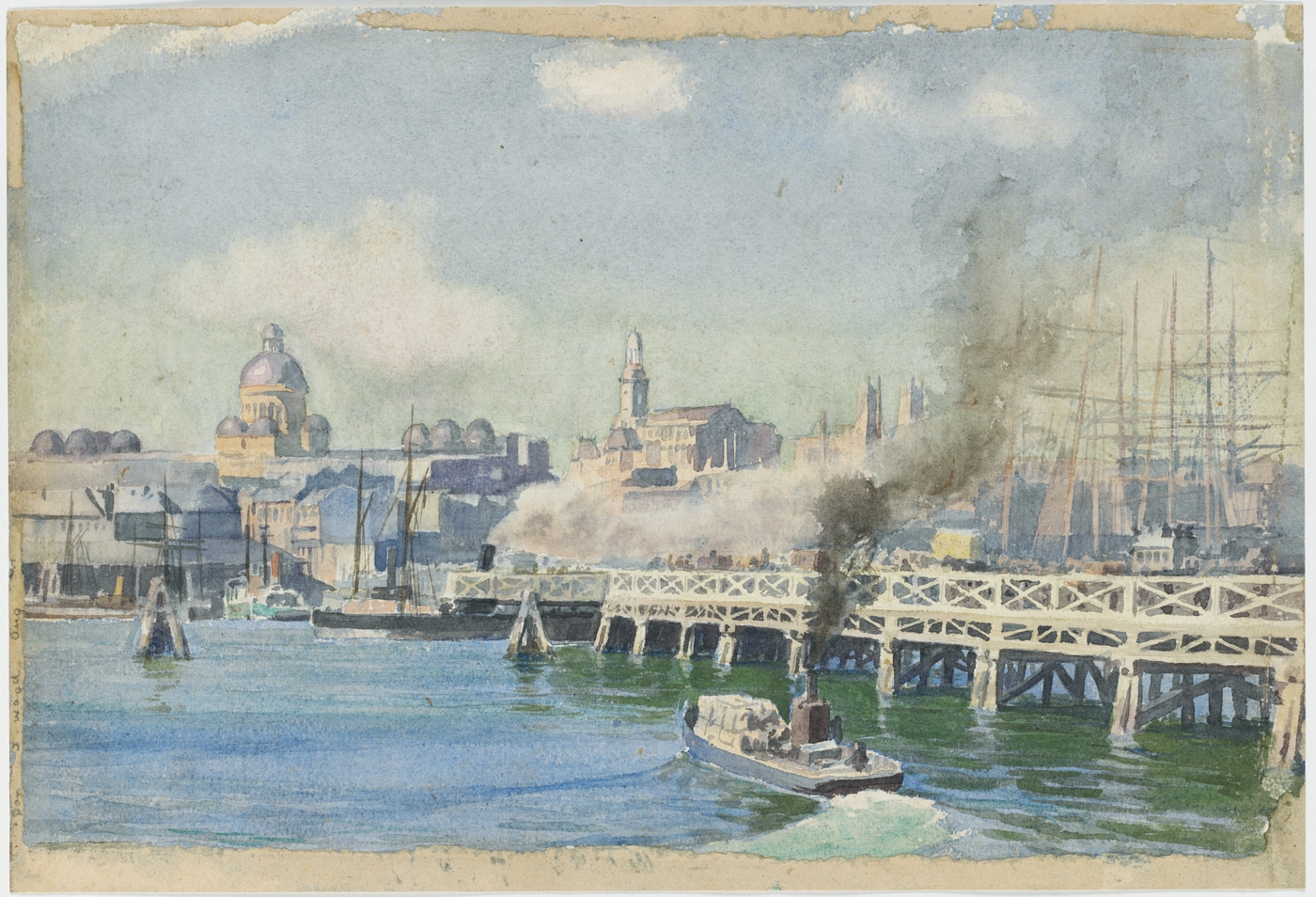In the early years of the colony, the search for arable land led to the expansion of settlements to the west and the south. The land on the north side of the harbour was considered unsuitable for agriculture; by 1974, only a few properties were established there.
The skills and technology required for building bridges were scarce in the early years of the settlement. The main method for crossing to the North Shore was by watercraft. The first road access to the North Shore was via a track around the headwaters of the Parramatta River to the west. This land journey took several hours.
From the 1800s, a host of bridges were built over the bays and coves to the west of Sydney. One of the earliest was the stone arch Lennox Bridge over the Parramatta River. Built in 1830, the bridge enabled access to the northwest.
By the 1880s, you could leave the city and travel across the Pyrmont, Glebe Island, Gladesville and Fig Tree Bridges. It took 20 kilometres off the old Parramatta route and became known as ‘the five bridges’ journey.
Gladesville Bridge
The 1881 Gladesville Bridge replaced the Bedlam Point to Abbottsford Point ferry punt, which had been established in 1831 to carry stock and vehicles to the Great North Road. It was the main thoroughfare to the Hornsby and Ryde districts of New South Wales.
The Gladesville Bridge was the first road bridge over the harbour. It was similar in design to the Pyrmont and Glebe Island Bridges: a low-level bridge on sandstone piers with five iron lattice girders, each 46 metres in length, with a central swing span.
This bridge carried traffic across the Parramatta River from 1881 to 1964. The sandstone piers remain visible west of the current Gladesville Bridge. The current bridge is a concrete arch bridge across the Parramatta River, between Drummoyne and Huntleys Point. Until 1980, the 305-metre span was the longest concrete arch in the world and was the first large bridge to be designed by computer.
Fig Tree Bridge
The completion of a bridge over Lane Cove River at Figtree in 1887 significantly shortened the journey to the North Shore. The bridge, also known as Fig Tree Bridge, was named after Figtree Farm, which was established by colonial businesswoman Mary Reibey in 1836. Reibey named her farm after a Port Jackson fig tree on the land. The first Fig Tree Bridge over the Lane Cove River was a swing bridge, similar in design to the original swing bridges at Glebe Island and Pyrmont.
The 1887 bridge was replaced by a modern steel and concrete girder bridge in 1963. This current Fig Tree Bridge was built in conjunction with the Tarban Creek and Gladesville Bridges as part of the planned North Western Expressway, linking the city with the Sydney–Newcastle freeway.
Glebe Island Bridge
Built in 1857, the first Glebe Island Bridge (originally called Blackbutt Bridge) enabled development in the western and northern suburbs.
Before the construction of the first bridge in 1861, the narrow crossing from Pyrmont to Glebe Island was made by a double steam punt. The punt served the small amount of traffic well until the opening of the Glebe Island abattoir in 1860, which increased traffic and added the pressure of transporting stock.
An electrically operated swing bridge, designed by Percy Allan, opened in 1903, replacing the original bridge. It connected Rozelle and Pyrmont over Johnston’s Bay.
The latest Glebe Island Bridge was opened on 3 December 1995. The name was changed to Anzac Bridge in 1998.
Iron Cove Bridge
The Iron Cove Bridge spans the Parramatta River connecting the central business districts of Parramatta and Sydney along Victoria Road, Sydney’s busiest road.
The original Iron Cove Bridge was built in 1881 as part of the ‘five bridges’ and created a new western route into the city – cutting travelling times for farmers heading to the Sydney markets from a two-day round trip down to one day. Prior to being built, water transport was the only means of crossing the Parramatta River.
There are currently two Iron Cove bridges. The bridge on the south eastern side, the older steel truss bridge, has distinctive piers and abutments which reflect its inter-war art deco design. Opening in 1955, this was the last steel truss bridge to be constructed using rivets in New South Wales.
In 2011, to alleviate the traffic bottleneck at Iron Cove, a new bridge called the Inner West Busway was opened. Located on the western side of the existing bridge, the new concrete Iron Cove Bridge has an outbound bus lane in the morning peak hour.
Pyrmont Bridge
The first Pyrmont bridge began operating in 1857 providing the main transport route between the city and Sydney's growing western suburbs. Constructed of timber, this swing bridge allowed shipping to move in and out of Cockle Bay.
The current Pyrmont Bridge opened on 28 June 1902. It is one of the world's oldest surviving electrically operated swing span bridges. There were 42 entrants in the 1901 international competition to build the new Pyrmont Bridge. The winning design was by Australian engineer Percy Allan.
Pyrmont Bridge consists of a steel truss swing span with timber truss approach spans. Timber was used because of the high cost of iron and steel and government insistence on using local ironbark to reduce costs.
The new electrically - operated Pyrmont Bridge (1902) continued giving access to Western Sydney and was acclaimed at a 1907 London meeting of the Institution of Civil Engineers. The electrical power to operate the swing spans was originally drawn from the Ultimo Power House (now the Powerhouse Museum).
Although the 1902 bridge was closed to motor traffic in 1981, it was saved from demolition and carried the monorail and pedestrians to Darling Harbour. It is one of the world’s largest electrically operated swing bridges. It was declared a National Engineering Landmark in 1992 because of the superb design of Percy Allan’s timber girder approach spans.



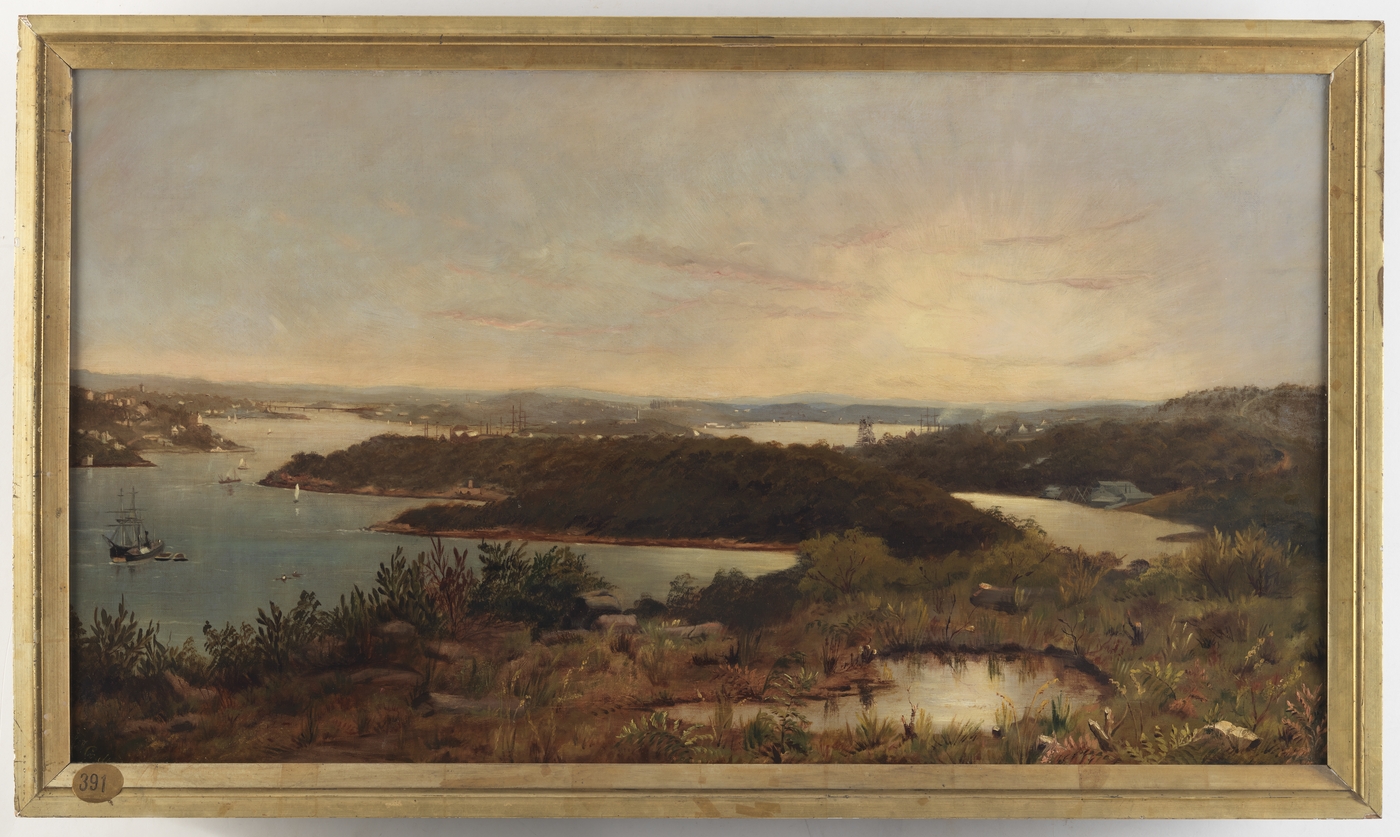
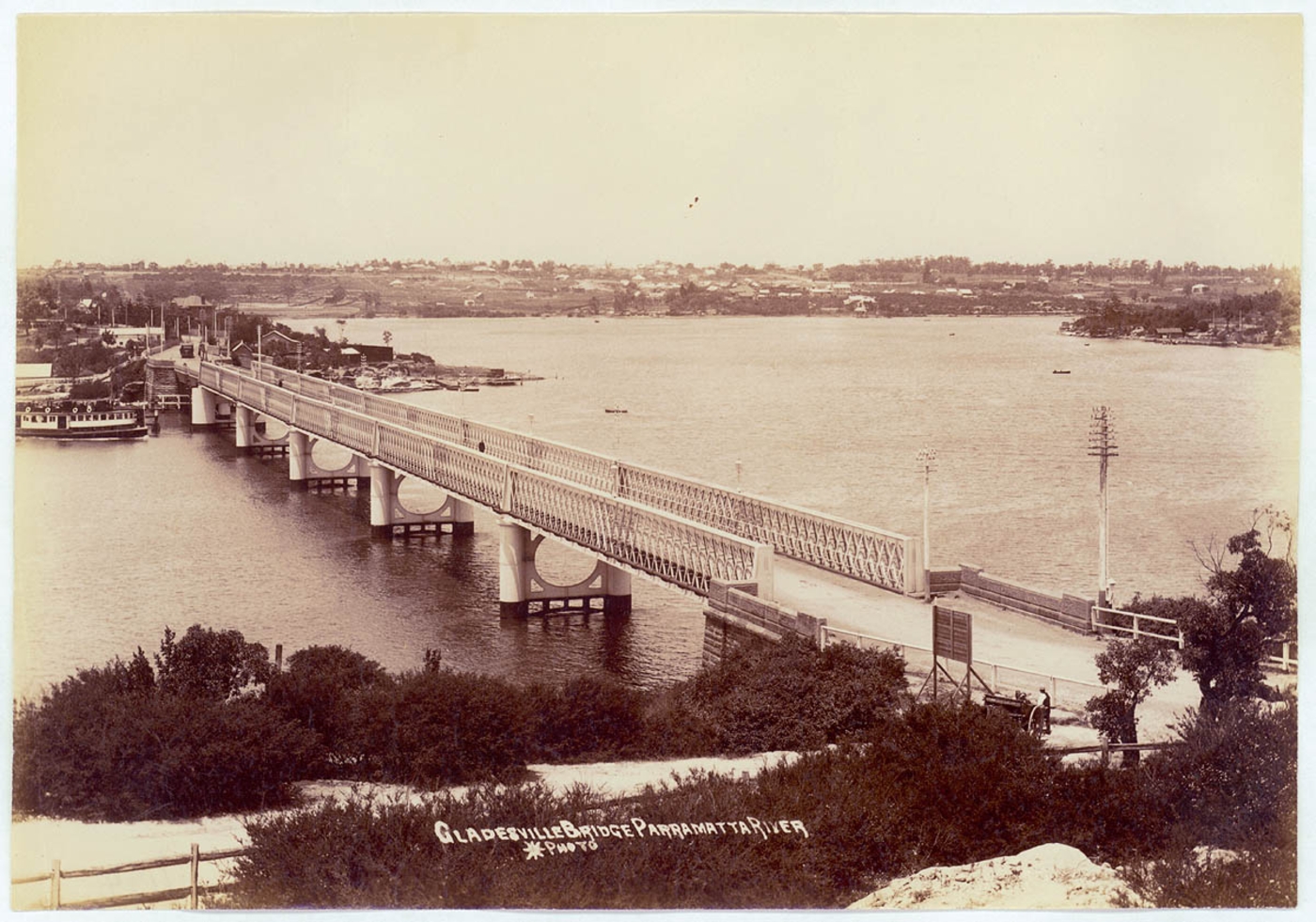
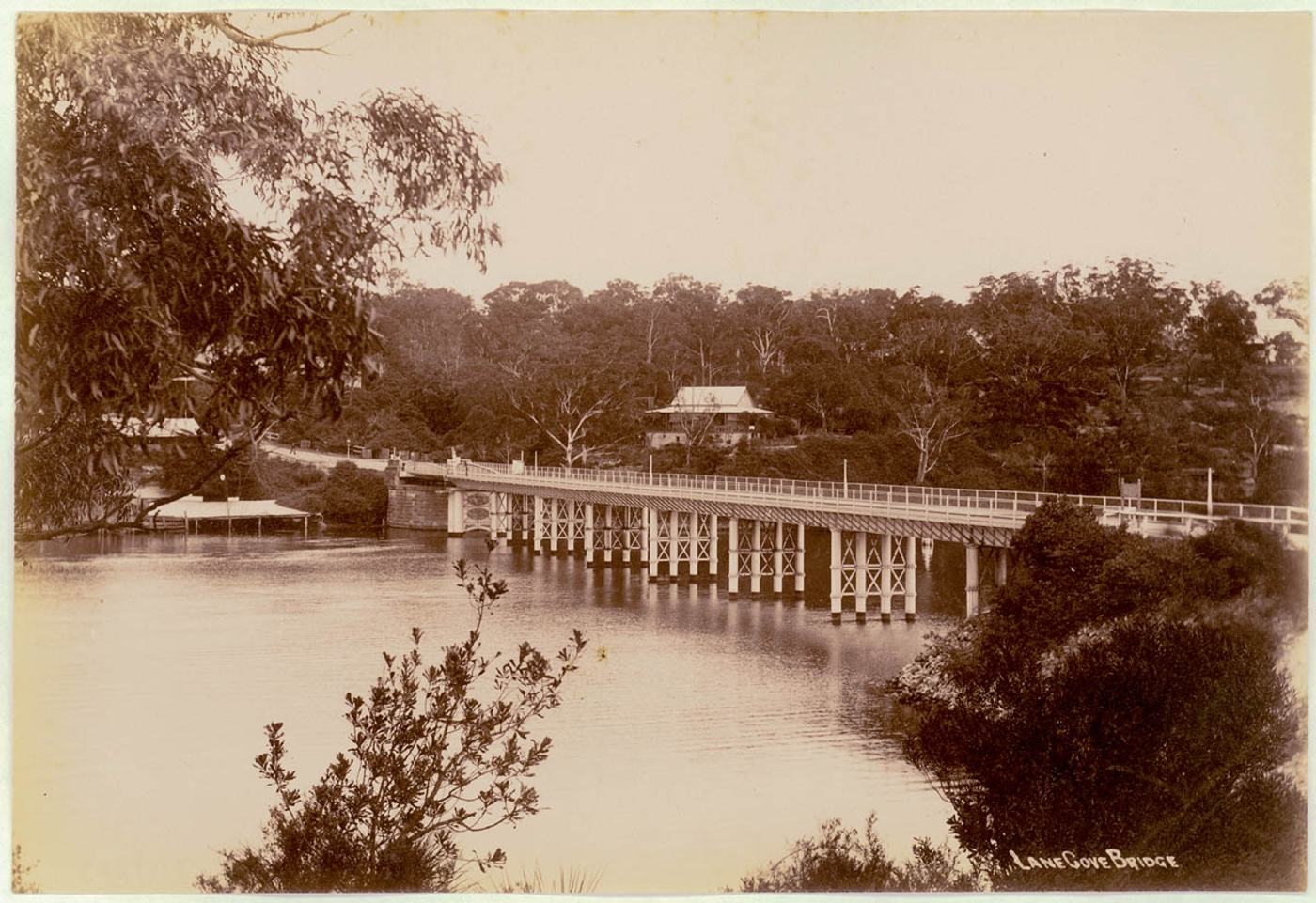
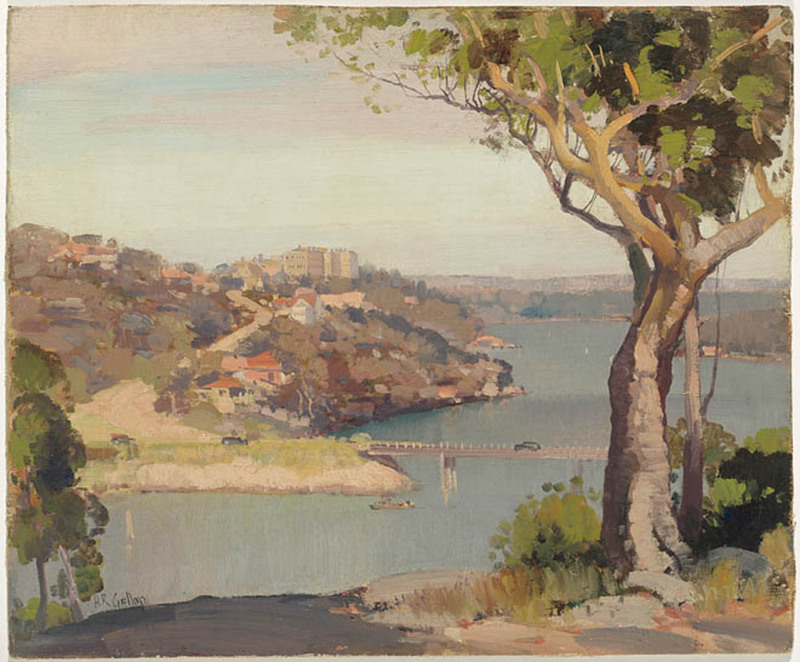
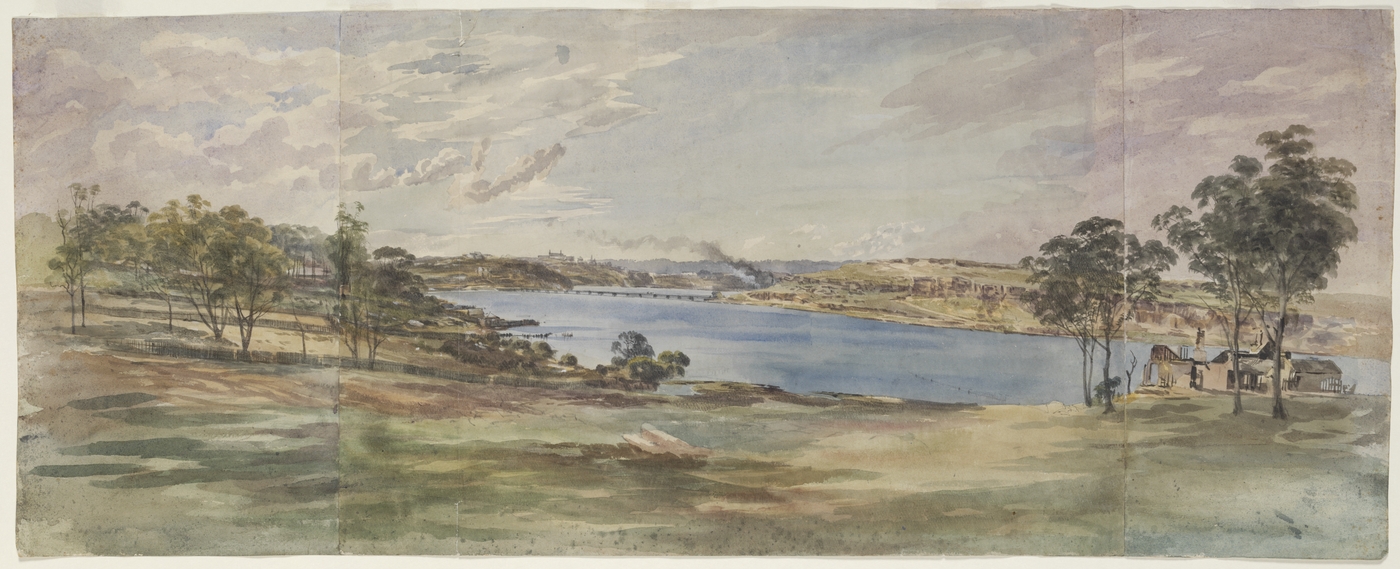

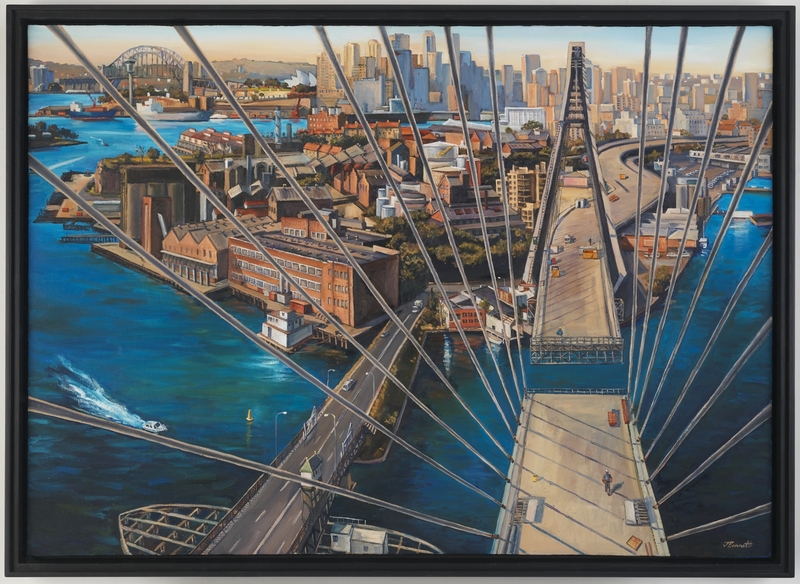
![[Long (Iron) Cove Bridge, Sydney]](https://prod.corp.slnsw.skpr.live/sites/default/files/a089031h.jpg)
![[Long (i.e. Iron) Cove Bridge, Sydney]](https://prod.corp.slnsw.skpr.live/sites/default/files/a089032h.jpg)
